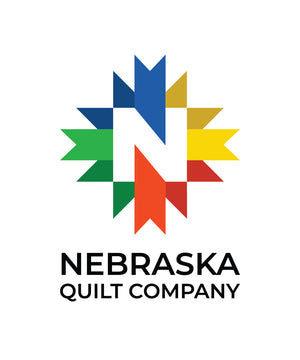Whether you're a new quilter or have been quilting for years, everyone makes mistakes from time to time. Learning from these quilting mistakes is part of the journey, and today we’re here to help you navigate some of the most common pitfalls. From fabric preparation to final assembly, let’s dive into how you can consistently create quilts that bring joy every time.
1. Skipping Fabric Starching and Pressing
Starching and pressing your fabric before cutting it may seem tedious, but it's crucial for accuracy. Unstarched fabric can stretch and distort, leading to piecing errors. Starch helps stabilize the fabric, making it easier to cut and piece precisely. To prep the fabric, lightly spray starch on your fabric and press with an iron. This added stiffness will make your fabric easier to work with and improve the accuracy of your piecing.
2. Not Squaring Up Blocks
When your quilt blocks aren't square, your seams won’t align and your points won’t be perfect. Squaring up blocks involves trimming them to a consistent size, ensuring they fit together neatly. Use a rotary cutter, ruler, and mat to trim your blocks to the size specified in your pattern. This step can be tedious but skipping it can result in a quilt top that is difficult to assemble and prone to puckering. (Read more about cutting rulers here!)

3. Wavy Borders
Adding borders without proper measurement can lead to wavy edges that won't lie flat. Instead of cutting a strip and sewing it on, measure your quilt top at several points and average the measurements. Cut your border strips to this average length and pin them evenly before sewing. This approach ensures that your borders fit perfectly and prevents unsightly waves.
4. Incorrect Seam Allowance
Inconsistent seam allowances can throw off your entire quilt, making it hard to piece accurately. The standard seam allowance for quilting is a scant ¼ inch. Using a quarter-inch presser foot can help maintain consistency, or use washi tape or a magnetic seam guide to make sure you’re staying aligned.
5. Using the Wrong Thread
Not all threads are created equal, and using the wrong type can cause problems. Thin or weak threads may break, and threads that don’t match the fabric's weight can affect seam durability. For piecing, use a strong, medium-weight cotton thread, like Aurifil, which blends well and withstands quilting stresses. Avoid using older thread because it can weaken over time and may not hold up during quilting and washing.
6. Rushing the Pressing Step
Pressing your seams as you sew helps your quilt lie flat and fit together correctly. Instead of ironing (which can distort fabric by dragging the iron), use a pressing motion—lift and press the iron straight down. Make sure to follow the pattern instructions for which direction to press each seam. This method helps maintain your fabric's shape and keeps seams crisp.
7. Not Prewashing Fabric
We’re wrapping up with a controversial topic: prewashing. There are die-hard quilters who don’t ever prewash because they want the crinkled look that comes from shrinkage after quilting is complete. Also, when you quilt with precuts, you shouldn’t prewash wash those, or you’ll lose too much to fraying. When working with yardage, though, we recommend pre-washing. Skipping the pre-washing step might seem like a time-saver, but it can lead to trouble later. Fabric often shrinks when washed, and colors can bleed, which may ruin your carefully pieced quilt. If you don’t pre-wash, your quilt may end up distorted after its first wash. To avoid this, wash and dry your fabric as you plan to treat the finished quilt. This ensures any shrinkage or bleeding happens before you start sewing, keeping your finished quilt looking sharp and vibrant.
We hope these tips help you avoid common quilting mistakes and enhance your quilting experience. Remember, making mistakes is part of the learning process, and even experienced quilters encounter them. Each error provides an opportunity to improve and refine your skills. Embrace the learning curve, take your time, and enjoy the creative journey that quilting offers.
Remember, Nebraska Quilt Company is your source for classes, sewing machines, quilt kits, and more! Join the Nebraska Quilt Company Community on Facebook to show us what you're cutting and quilting right now! Visit us in store or online anytime!

